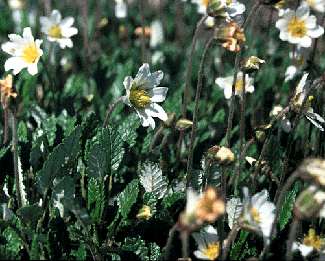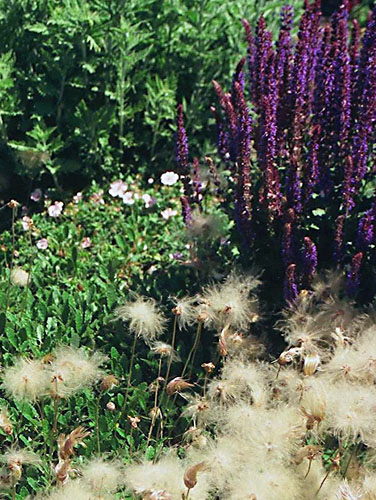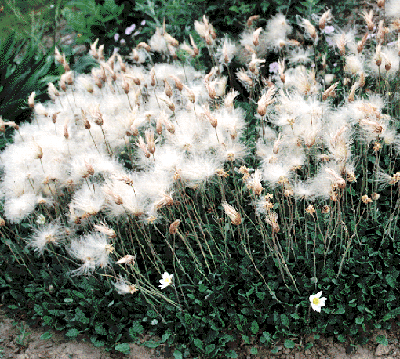- Hardiness: USDA Zone 1.
- Water use: Low to moderate; needs good drainage.
- Light: Full sun.
- Size: Plant grows about 3" tall and slowly spreads. Flowers and seedheads are held about 6 to 10 inches above the foliage.
- Plant habit: Very low, spreading groundcover. It retains its leaves in the winter, but they often blacken.
- Native range: Found in northern arctic regions; native in Washington state.

- Leaves: Leaves have scalloped edges. They are shiny green on top and bright white on the bottom. They develop some red tones in the fall, but blacken with heavy frosts. They regain their color in spring.
- Season of Bloom: Blooms heavily in spring and sporadically throughout the summer. Each flower is held up on a stalk about 4 to 6 inches tall. The flowers have 8 whitish petals and a bright yellow center.
- Seeds: Flowers are followed in early summer by feathery seed heads that are attractive most of the summer. The flower stalk grows as the seeds are forming, rising to about 10 inches tall. Seed heads have light pink tones when they are young and tight; they expand to a creamy white as they open and become feathery. Seeds blow away in late summer. The dried flower/seed stalks remain.
- Culture: Easy to grow. Grows best in well-drained soils.
- Maintenance: The dried seed stalks may be pruned off to obtain a neat appearance, or the stalks may be left alone to provide winter interest and help hold snow on the plant. Prune back plant stems to control spreading. Plants have not been invasive in my garden. Plants will slowly root in the ground as they spread, and rooted stems may be used to move the plant to new areas. It has not produced seedlings in the garden.
- Pests/Diseases: None seen in my garden.

Dryas in seed (bottom) with
blooming Salvia and Geranium.
